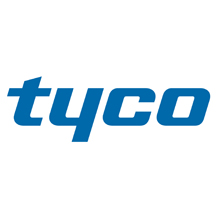American University in Washington D.C. has been lauded for academic excellence, earning Princeton Review’s 2005 recommendation as one of “America’s Best Value Colleges”, a 2006 Fiske Guide to Colleges “Best Buy”, and #85 ranking in U.S. News & World Report’s 2006 list of the country’s top universities. It's more than 5,800 undergraduate students, 3,500 graduate students, and 1,600 law school students are grounded in a distinct campus culture of academic curiosity, ethical awareness, and engagement in Washington and abroad.
University acts a first responders
As a functioning law enforcement body, the University’s Department of Public Safety acts as first responders for any suspicious activity or emergency situation on campus. They take their mission of protecting life very seriously, developing community alliances to increase safety awareness and reduce crime. The Department is a major player in the student orientation process. Department staff sergeants conduct briefings with parents of incoming freshmen to reassure them about monitoring activities and discuss practices for preventing criminal activities.
The Department of Public Safety has long been a loyal Software House customer, starting in the late 1980s with the replacement of its old manual key system with the installation of the now retired Software House C•CURE 1Plus Security Management System. In 1999, the system was upgraded with Software House RM readers and a C•CURE 800 system with the badging option. The flexibility that C•CURE 800 offers is popular among the students, faculty, staff, and contractors, who use magnetic stripe cards to enter dorms and administrative buildings, and to charge meals in the campus cafeteria. Dormitory doors are locked 24 hours a day and are accessible only by swiping an access card or registering with the front desk, which is staffed 24 hours a day, seven days a week.
Users simply swipe the magnetic card through the readers that are installed outside each entry point, and visitors must be escorted by a resident at all times. University personnel and maintenance staff also check in at the front desk when entering residence halls. Academic and administrative buildings are generally open while classes are in session, and are accessible to authorised personnel during off hours via magnetic access cards.
Department of Public Safety, Manager comments
The Department of Public Safety also uses the C•CURE system to assign tiered security levels to faculty members. Many adjunct professors, for example, have access to office suites. “If someone loses their key, it’s unrealistic to have to change the locks and reissue 75 new keys to faculty members using the suite,” explained Brian Thompson, the Department of Public Safety’s security technology manager. “With the Software House system in place, things are much easier. We can tailor security clearance for certain areas and even specific times of day. If someone loses their card we simply deactivate it and issue a new one. We also like the fact that the Software House system has a seamless integration package so down the road we can manage the surveillance cameras on campus directly through C•CURE.”
 |
| The Department of Public Safety also uses C•CURE system to assign tiered security levels to faculty members |
“Instead of having a wide open campus that’s difficult to secure, we now have electronic controls that offer considerable advantages,” explained Chief Michael McNair, director of Public Safety for American University. “The C•CURE system has significantly reduced the kinds of problems you have with traditional key locks, such as lost keys or labour-intensive procedures. In weather-related emergencies, for example, the school may have a delayed opening. Now, one administrator can change the time that all public doors are unlocked in one fell swoop within C•CURE instead of security personnel having to go around manually to unlock each door. It’s a big time saver and an excellent way to control entry points.”
This is also helpful for the library, which has varied closing hours. Before they deployed the card access system, an officer walked around the library each evening to make sure each door was secured. Now they can verify that all doors are locked instantly using C•CURE.
IST maintains the university’s security systems
Integrated Security Technologies (IST), a Virginia-based system integrator, is responsible for maintaining the university’s security systems and most recently was tasked with upgrading its CCTV system, which includes two 42-inch plasma screens and four 16-channel Intellex digital video management systems, which record footage from CCTV cameras located around campus. “IST is one of the best out there in terms of expertise with network infrastructures, understanding and supporting our various databases, and most importantly, supporting our C•CURE system,” Thompson said. “And the Intellex units have been a great resource for our investigators.”
The Intellex digital video management systems offer multiplexing (combining multiple channels via a common transmission path) as well as alarm/event detection. The system records and replays footage simultaneously. Using Network Client remote management software, the university displays footage from all four DVRs on two plasma screens within the public safety office’s dispatch centre. Security personnel can simultaneously display live and recorded video along with associated audio and text, archive data, and search for data, all while recording multiple video, audio, and text streams.
Security staff can quickly retrieve surveillance footage for investigative purposes, conducting audits to see when particular individuals accessed an area in question. “This is particularly helpful when coordinating with the Metropolitan (D.C.) Police Department as well as with merchants involved with loss prevention cases,” said Thompson. “With our VCR system we had to change tapes daily, and store physical tapes for about 30 days. Now we can keep up to a month’s worth of footage on the Intellex hard drive so it’s more readily accessible. It’s extremely beneficial. We can search all recorded video in just a few minutes as opposed to six hours.”
“The university’s security personnel continue to seek new methods for ensuring the safety of students, faculty, and staff. They are currently utilising proximity card readers in select areas of the campus for greater ease of use, with plans to upgrade to this technology campus-wide over the next several years. And since C•CURE offers seamless integration with Intellex, the university may use the software in the future to control camera operation. This way if an alarm is activated, they could direct the camera to pan to that area and capture any ongoing activity. Footage would be instantly recorded on the Intellex system.
The access control and digital video systems now in place have played a key role in making the campus a safe place to live and work.” McNair concluded, “It’s a great measure for deterring crime.”
From facial recognition to LiDAR, explore the innovations redefining gaming surveillance













